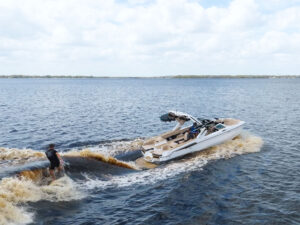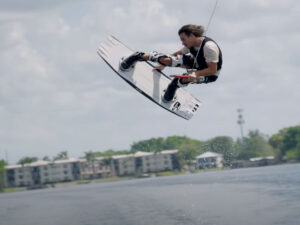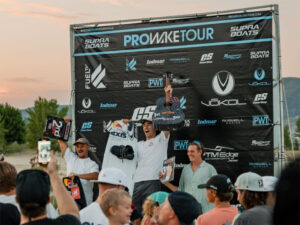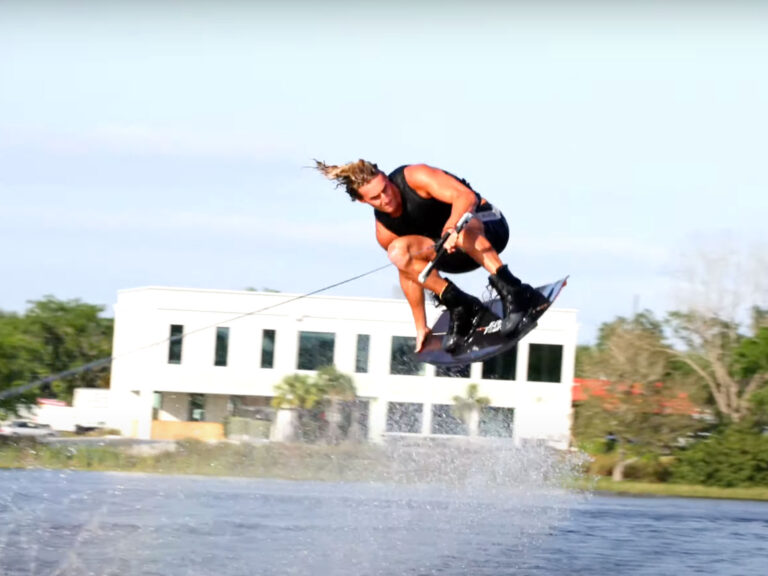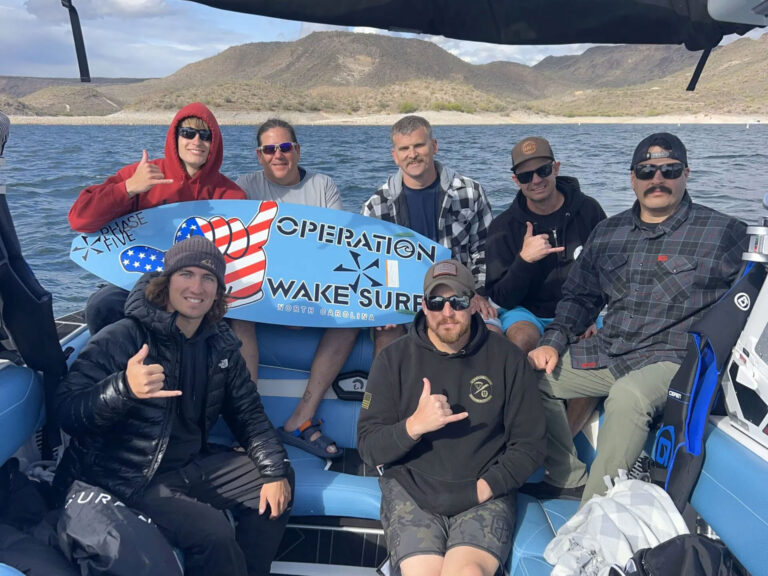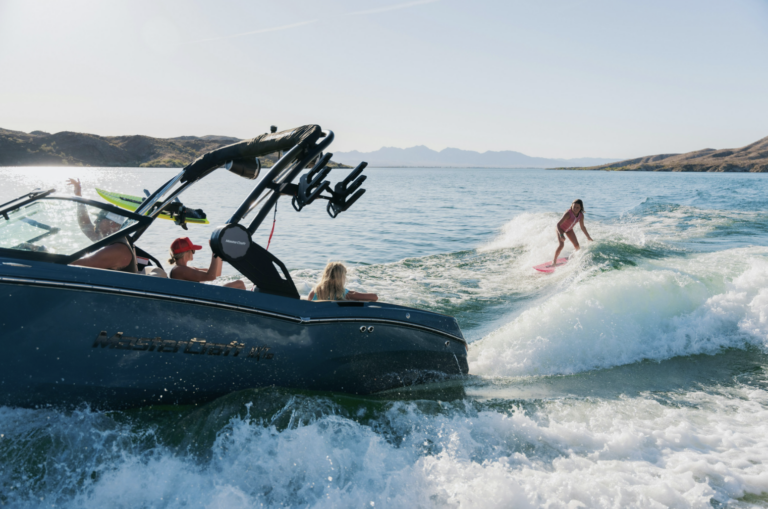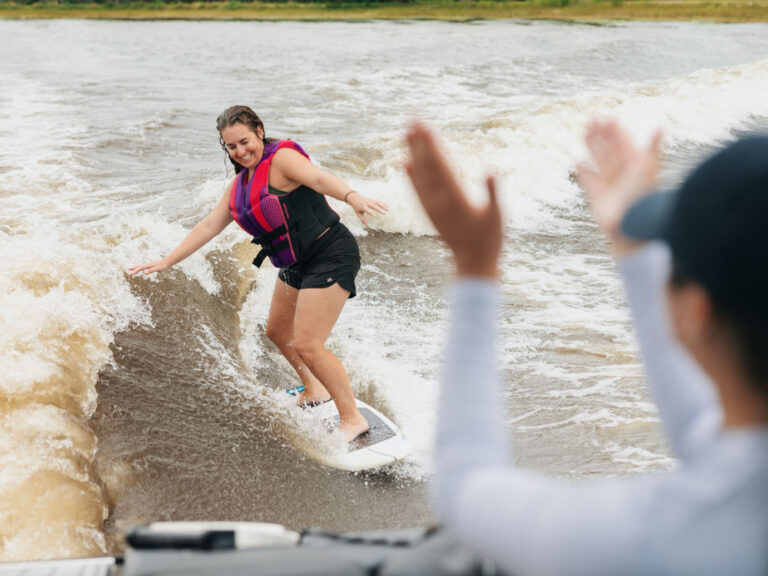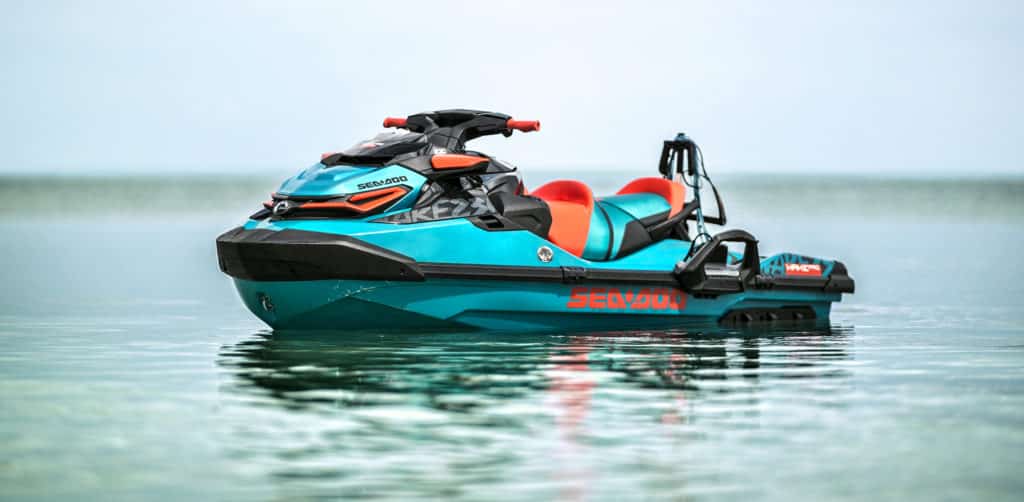
Popular tow sports like wakeboarding and wakeskating continue to attract a big audience, but when it comes to the boats that provide the tow, not all enthusiasts can afford the cost of entry. In terms of price per foot, wake-specific tow boats are some of the most expensive models on the water. Even your average runabout can be price-prohibitive for the younger audience these activities so often attract. That’s why, for many wake-sport enthusiasts, personal watercraft offer the ideal alternative. They’re affordable, fuel efficient and easy to tow and store. For riders looking to try their hand at negotiating on-water obstacles like ramps and sliders, PWCs are also highly maneuverable and don’t put up the massive wakes that can often damage or dislodge these anchored features.
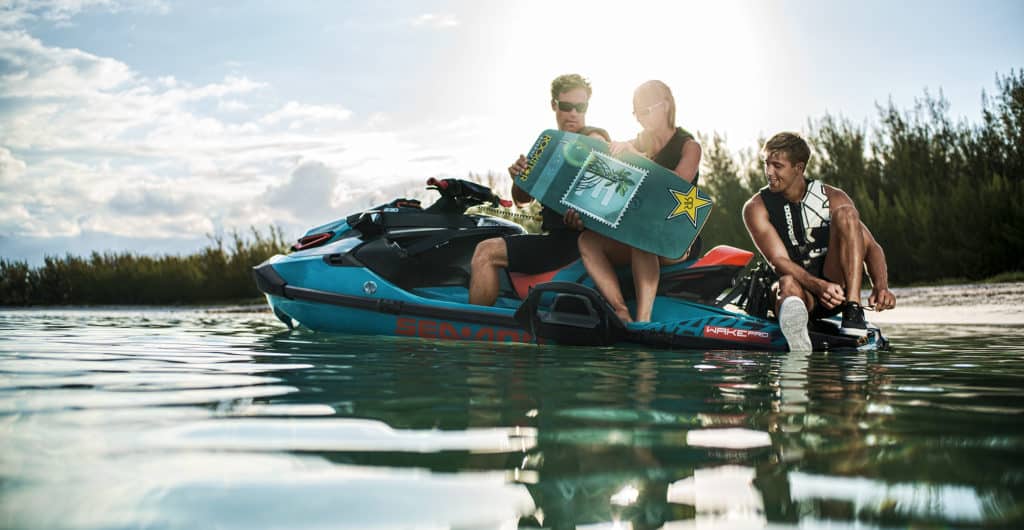
The catch? Few PWCs are designed with towing as a priority. They typically anchor the towline low to the water, where it limits air time or snags in the jet wash; have no space to store bulky boards or skis; and feature ultra-responsive throttles that many drivers find hard to keep at the steady speeds board riders crave.
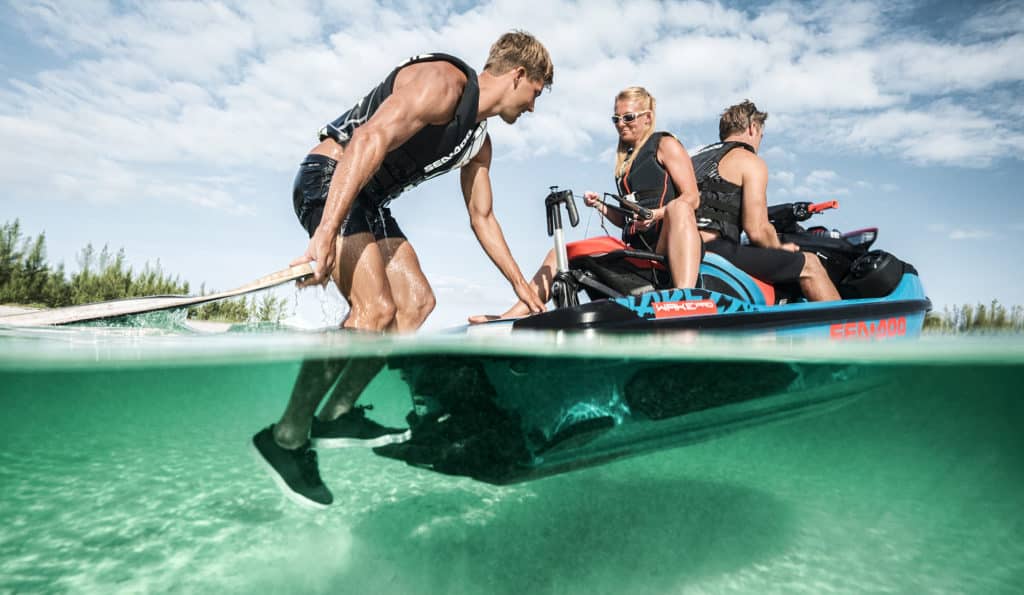
Sea-Doo WAKE series is the notable exception. The only personal watercraft on the market designed specifically for tow sports, the WAKE PRO 230 and WAKE 155 address each of the above concerns and more. Rather than a tow ring or simple U-bolt mounted just above the swim platform, WAKE models offer a retractable, elevated pylon both to raise that towrope above the water and deliver a more solid attachment point. Pylons even come with convenient handholds for a rear-facing spotter. On the WAKE 155, that pylon is permanently mounted to the stern; on the new WAKE PRO 230, it easily attaches and removes as just one more component in Sea-Doo’s innovative LinQ accessory system. As to wakeboard and wakeskate storage, boards no longer need to be shoved into footwells, where they’re almost certain to bang shins and ankles. Instead, both WAKE models feature a removable gunwale-mounted board rack, designed to secure a board in place while keeping footwells free of obstructions. A convenient, deepwater reboarding step is also standard equipment.
Additional features further fine-tune the rider experience. A speed-control-based SKI mode lets drivers set and maintain a desired towing speed without constant throttle adjustment, as well as choose from one of five preset acceleration curves to best match the needs of the rider or activity. There’s also fast-acting electronic trim to deliver better acceleration during those deepwater starts, and compensate for conditions or passenger load once on plane.
